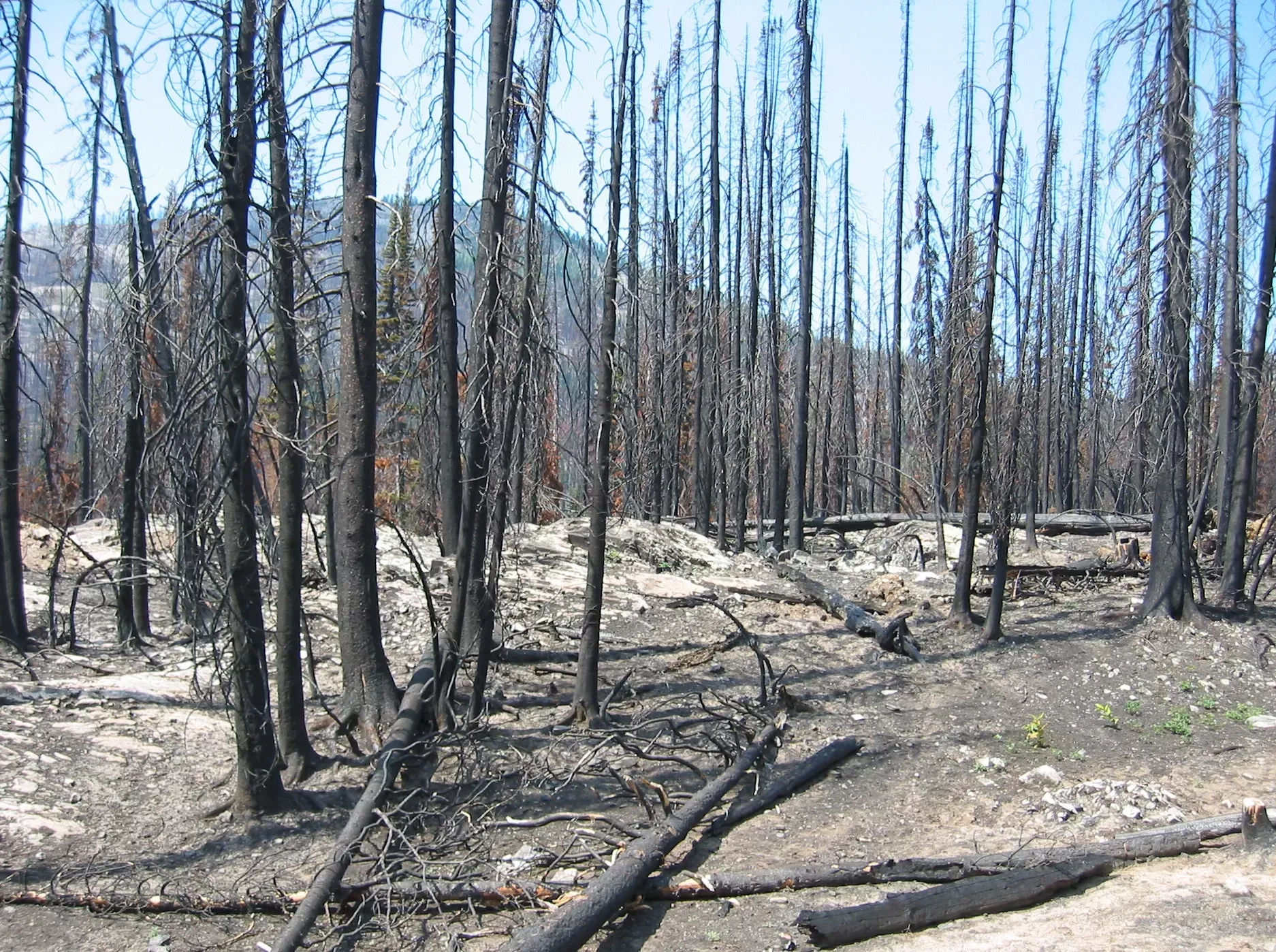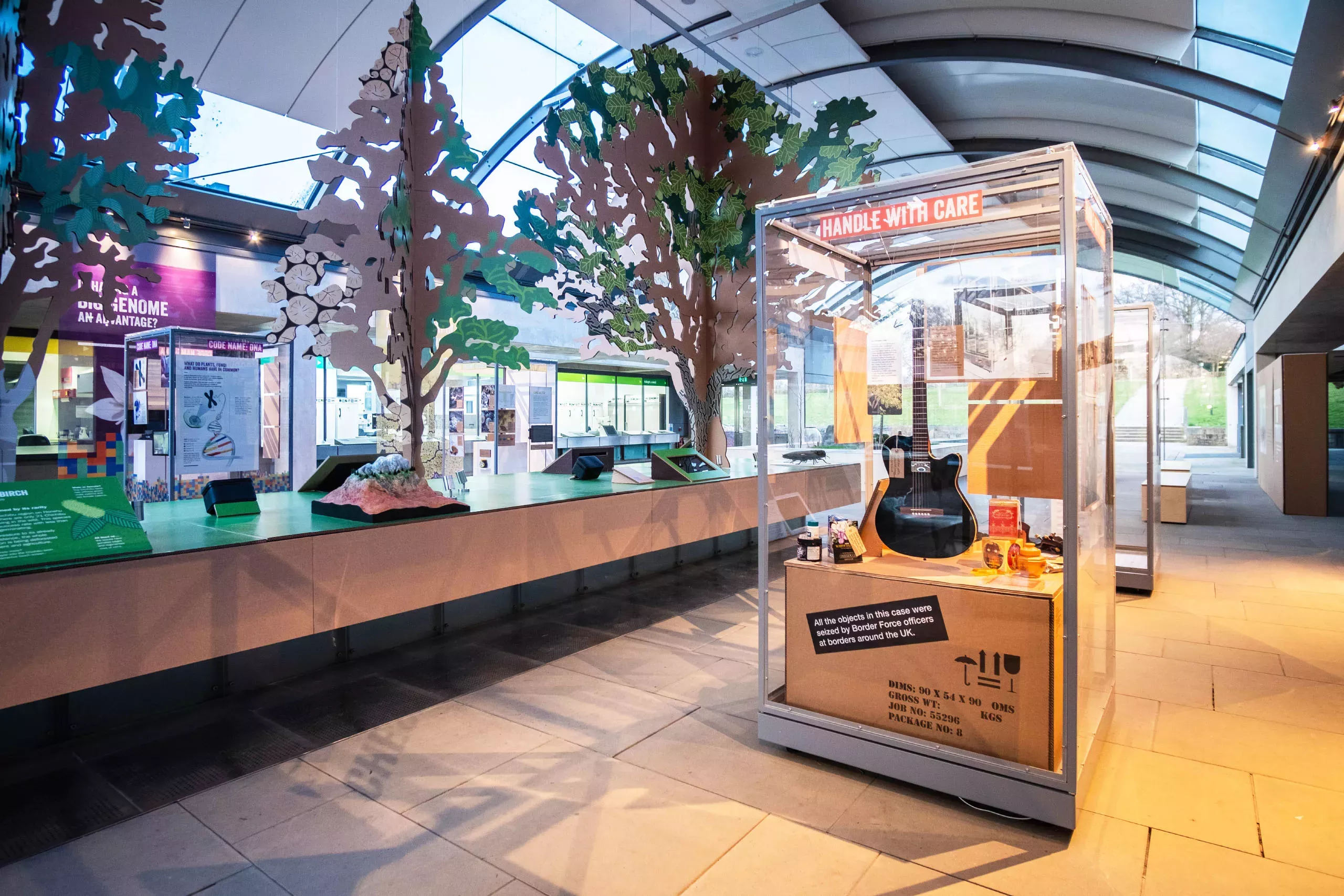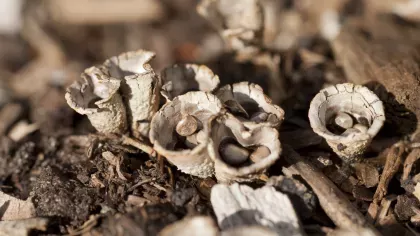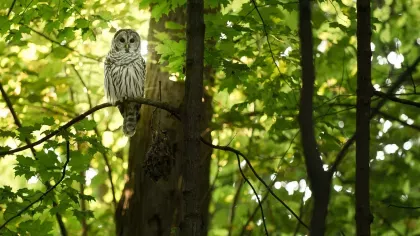8 August 2019
Meet the firestarting fungus
King Alfred’s cakes (Daldinia concentrica) is an ancient firelighting fungus with a fascinating story to tell.

Walking in the woods you might have spotted round black lumps, about the size of golf balls, growing on tree trunks. But what are they?
Found across the UK all year round, they are the fruiting bodies of a fungus commonly known as 'King Alfred’s cakes' (Daldinia concentrica and other closely related Daldinia species).
Burning buns
The fungus gets its name from a famous traditional tale. King Alfred, taking refuge from the Vikings in a peasant’s home in 878 AD, forgot to watch some cakes baking on the hearth and was scolded when they burnt.
Looking at the fruiting bodies, it’s not a stretch to see their resemblance to burnt buns.

Ancient firelighter
The connection between King Alfred’s cakes, humans and fire goes back much further than the legend of King Alfred.
During the archaeological excavation of a 7,000-year-old Spanish settlement, the fungus was found gathered alongside different ‘tinder’ fungi. In other words, the people living there had likely foraged them to help light their fires.
Traditional methods of creating a spark, such as hitting flints together or creating friction between pieces of wood, are enough to ignite the dry fruiting bodies of King Alfred’s cakes.
These can then be used as kindling to start a fire. This explains other common names used to describe the fungus such as ‘carbon balls’ or ‘coal fungus’.
This traditional practice is well known in recent human history, shared by word of mouth. But this discovery shows it could be traced right back to the Stone Age.
Once lit, the fruiting bodies can smoulder gently for a long time, leading to the speculation that prehistoric people could even have used the fungus to transport fire when moving between places, a powerful survival tool.
Rise like a fungus from the ashes
While you might interpret a fungus growing on a tree as a sign of disease, King Alfred’s cakes don’t cause any harm to their host.
In fact, it’s a sign that the tree or part of it is already dead, as the fungus is an example of a saprotroph – a fungus that decays dead plant material.
Oddly enough, fire can play another role in the life of this fungus. Some of the species commonly referred to as King Alfred’s cakes are known to be pyrophilous, or fire-loving.
This means that they grow exclusively on burnt wood, making the most of the debris after forest fires or lightning strikes.
Pioneer species, the first to grow after devastation such as fire, are extremely important in helping the landscape recover.

More than a mushroom
Whether you know it as King Alfred’s cakes, carbon balls or coal fungus, Daldinia concentrica clearly has a fiery legacy.
Understanding the traditional uses of fungi in our ancestors’ lives can give us a greater appreciation of the vast diversity of properties the kingdom can offer.
While we may not rely on tinder fungi anymore, all sorts of fungal species are essential for our modern food, medicine and manufacturing industries.
Discover more fungi stories at Wakehurst’s current Surviving or Thriving exhibition, based on our State of the World's Plants and Fungi reports.




